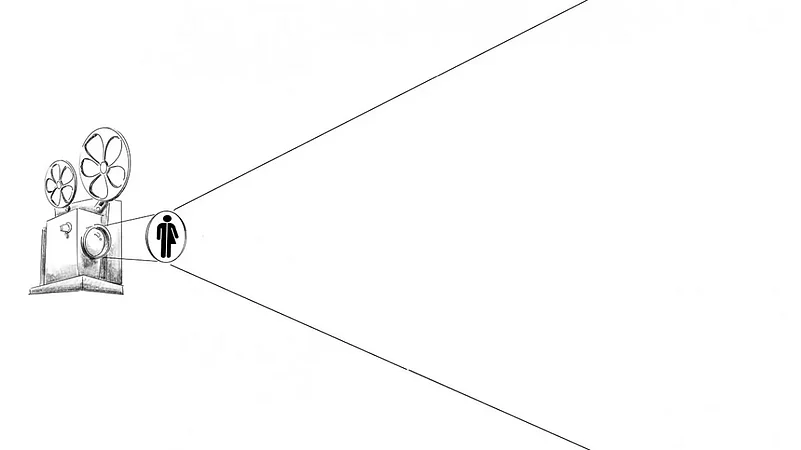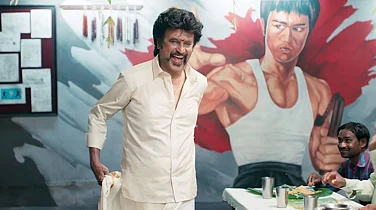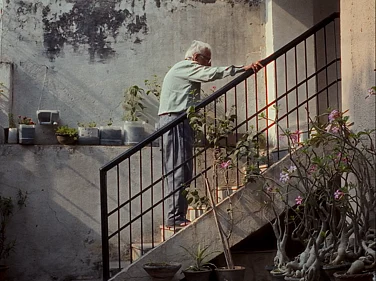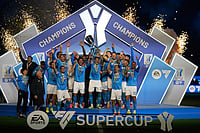About 400 years ago, in the Virudhunagar region of southern Tamil Nadu, there lived a transgender warrior by the name of Arikandi, who is said to have valiantly fought with the army of a king—Kangapuram Jamin—to protect the life of a princess, the daughter of Mangalapuram Jamin.
History has a tendency to be biased towards its writers. And since transgender persons did not write history, Arikandi’s story was not recorded in books or taught in schools. Yet, the story lived on for 400 years in the collective memory of locals and was shared verbally within the traditional transgender communities until, in the 21st century, it travelled 60 kilometres to Madurai and ended up with Priyababu.
A transgender activist, educationist and social worker, Priyababu was stunned by Arikandi’s story. But she was even more shocked to realise that only a handful of people knew about her.
“When we think about transgender persons or hijras in India, we think about beggars and sex workers. We think of transgender people as helpless victims. But Arikandi was a warrior, a strong and powerful person, an inspirational character. I wanted to tell this story to the world. So I decided to make a film about it,” says Priyababu. And thus began the year-long journey to research Arikandi.
Priyababu’s film, which released in 2022, marked a big moment for the trans community as it was made not only for transgender persons and about them but also by transgender persons. Unlike in the growing list of “trans-themed” films like Taali, Chandigarh Kare Aashiqui, Laxmii and others, to name a few from Bollywood, the lead role of Arikandi was played by a noted transgender physiotherapist S Solu who trained for 15 days to portray the character of the warrior. Over 80 artists were involved in the film of which 12 were transpersons, she states.

The activist who left her home in the 90s and spent her initial days on the streets of Madurai until she found her feet in social work, raised the Rs 14 lakh required to film the period drama through crowdsourcing platforms like Ketto, petitions to the Tamil Nadu Transgender Board (which provided Rs 4 lakh) and voluntary donations of friends. The rest came from her own savings, which she earned through working jobs.
Priyababu, who runs the country’s first Transgender Resource Centre in Madurai and is also the founder of initiatives like the Trans Kitchen and Transgender Library, was not surprised to find the lack of resources and documentation of the transgender community’s history in the country. But the larger hurdle came in the filming stage.
“I’m not a classically trained director. But I had a very clear vision of what I wanted to do. And having run my own YouTube channel for many years, I had some experience with screenwriting for my shows. But I had to face a lot of ridicule from my technical crew, many of whom were not convinced that I knew how to direct a film or a shot.”
Priyababu recalls how her cameraperson often showed the shots he had filmed at her behest to her assistant director—a cis-het man—for approval. “There is this whole attitude of dismissing the technical skills of a transgender person based on their gender or sexual identity,” she states.

Priyababu’s story, though inspirational, comes as a reminder that amid the growing interest in queer stories in the mainstream Indian film and television industry and a purported push toward representation, inclusion remains a contested issue for artists from trans and queer communities in India.
With the release of Taali, a series based on real-life transgender activist Gauri Sawant in which actress Sushmita Sen plays the titular role, Bollywood seems to be in a mode of liberal self-congratulation. And indeed, many like Priyababu and documentary filmmaker Debalina Majumdar from Kolkata agree that these films are a starting point for conversations about trans issues. “A series like Taali with Sen as its lead generates interest among the masses. Irrespective of its merit or political correctness, it helps start a dialogue which creates room for criticism,” Majumdar, who has been documenting trans identities and issues since the early 2000s, adds.
Many trans and non-binary viewers and filmmakers have their reservations against this new and purportedly woke “representation” of trans lives and stories in the media which often become tokenistic and even offensive.
While many argue in favour of casting trans actors in trans roles, artists like Bengaluru-based Siddhant, a filmmaker and theatre director working with Light Off, says that the gender identity of the actor should not be the basis for their selection. “I don’t think that is inclusion and casting is a much more complex call than just the gender,” Siddhanth states.
What is problematic, however, is when they put makeup on cis-het actors to make them “look more trans”. “This idea to exoticise the body of the trans woman or have her look a certain way fosters stereotypes. It focuses on cementing similarities between trans and cis-het when in reality, we should be nurturing the difference,” he states.
The point about body image is also raised by Geet, 38, a playback theatre actor and art facilitator who works with Citylamps Playback Theare, a theatre company based in Bengaluru that works with trans and non-binary persons and often performs for LGBTQIA audiences.
“The body image that films like Chandigarh Kare Aashiqui or even Taali project of trans women (played by cis-het women) is scary. That is not how trans women look and I worry and wonder what kind of pressure trans women go through while cis-het women get projected as trans women on screen. Trans persons cannot be judged by the cis-het beauty lens. It would lead to a trans person constantly worrying if they look “trans enough” or pass according to cis-het standards,” Geet states.
Geet, who is a trans-masculine person, says even when transgender actors are cast in queer roles, the specifications on the casting calls are often derogatory and restrictive. “I have seen casting calls worded like ‘Non-Binary AFAB (assigned female at birth)’. It’s dehumanising to have assigned gender which many of us renounce as a criteria for casting”.
Much like actors who only form the tip of the iceberg in terms of queer-inclusion, make up and look form just one layer of representation. Most cis-het filmmakers fail to delve deeper than that, resulting in lacklustre films with no authentic insight. That’s often because the real way to shape a film is through the filmmaking process which involves direction, screenplay, cinematography, editing and much more. This dearth of inclusion of queer persons in these professions hampers their representation as well. “You know, as queer people, we often live with this ‘gaze’. It’s sometimes curious, sometimes amused, sometimes intrusive, sometimes abusive. It comes very organically to us —this phenomenon of being ‘looked at’, as opposed to ‘being seen’,” Majumdar explains. The documentaries made by her and her team contain this outsiders’ gaze. “It isn’t something a cis-het person would easily notice.”
Nevertheless, queer artists, especially trans and non-binary, continue to face the problem of access to platforms to showcase their talents. While those like Siddhanth swear by meritocracy and want their gender to not be their so-called “USP” as a filmmaker or artist, Geet points out that there is a glaring problem of gatekeeping and disproportionately occupying spaces by upper caste trans/non-binary persons.
“As across every category in Indian society, caste shapes trans lives as well, and transgender persons from marginalised castes or persons with disability find it harder to even enter the same spaces as some of the privileged queer cliques,” Geet states. In cities like Kolkata, Bengaluru, Chennai and Mumbai, which boast of strong trans activism, access to these communities remains restricted to the urban elite and persons like Priya Babu, who work on grassroot often find it difficult to wiggle room. But Priya Babu remains optimistic. “Much of the industry is still dominated by men and even women have barely got equality yet. Trans visibility will take longer. But we have made the start,” she states. Geet adds that while there is still talk and awareness about trans/non-binary lives, "intersex people are completely invisibilized in films, theatre and other mainstream art spaces."
The importance of highlighting queer identity and the work of queer artists is undeniable. When award-winning Bengali director Rituparno Ghosh came out about his sexual identity and made films like Chitrangada, which he both directed and acted in, the Bengali “bhadralok” was shocked. “But he managed to breach the sacred Bengali middle-class “ontormohol” (inner chamber) and suddenly, everyone was talking about gender, about trans identity,” Majumdar recalls. In hindsight, all his films bear the hallmark of his inner struggles and search for identity and assertion.
Though he does not want to be pegged as a “queer filmmaker”, Siddhant agrees that most queer filmmakers cannot help but make films about gender. His own work, including his plays, has a focus on gender and issues related to queer identity. “I don’t think that every film a queer person makes has to have the gender lens just because they are queer. But as a queer person, it’s hard not to tell stories only I can tell because I have lived those feelings and experiences,” he states.
One wonders what Ghosh, who passed away before Section 377 was abolished or before transgender persons in India were granted the third-gender status by the Supreme Court, would have felt about the changing tide of popular cinema. Would he be happy with the representation? Or would he scorn at the appropriation? Nevertheless, Ghosh’s true legacy—both as a filmmaker and as a queer person—lives on in younger generations of queer filmmakers, actors and storytellers who are making the entertainment industry inclusive, one painstaking film and play at a time.
(This appeared in the print as 'The Trans Lens')


























